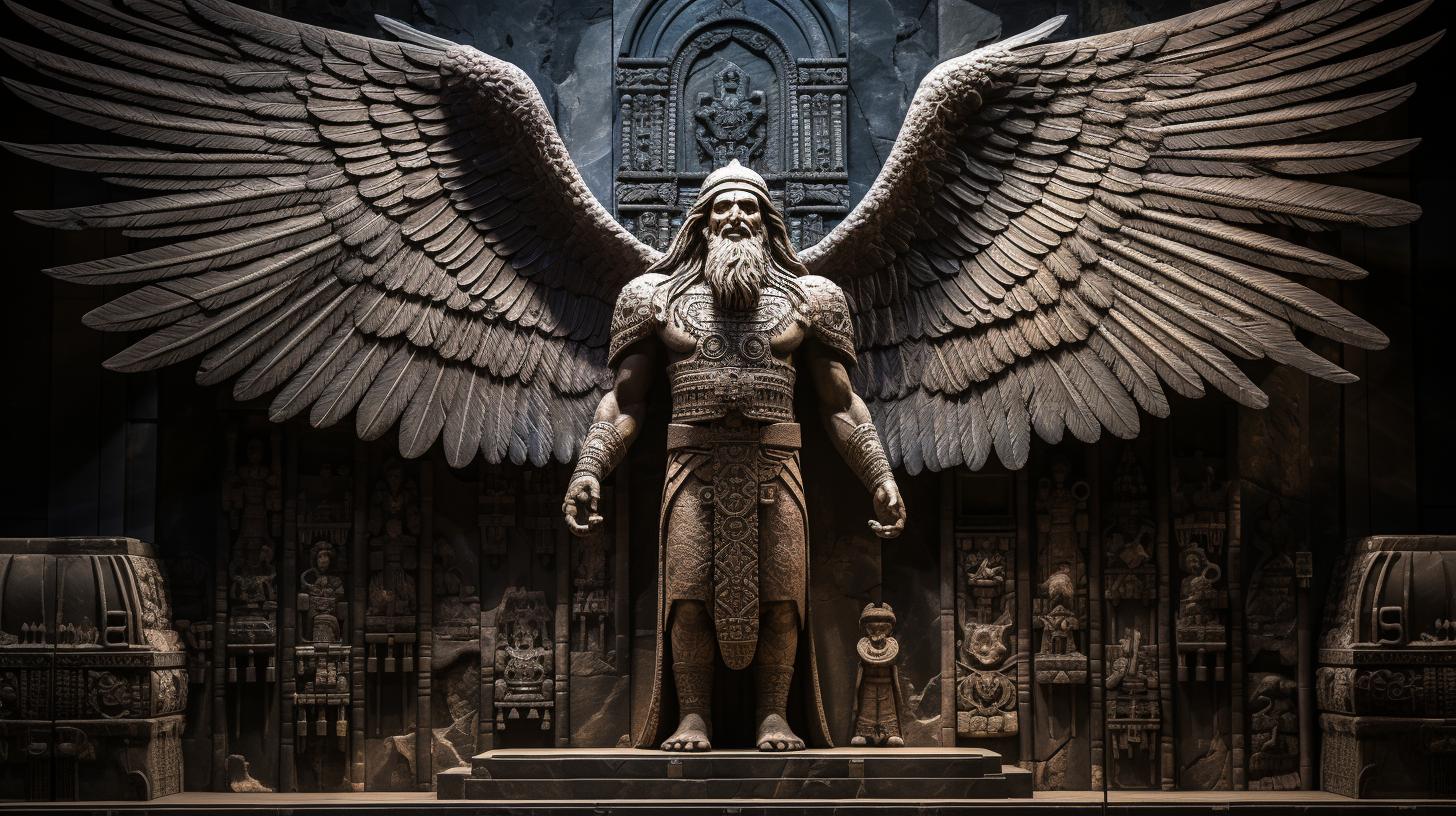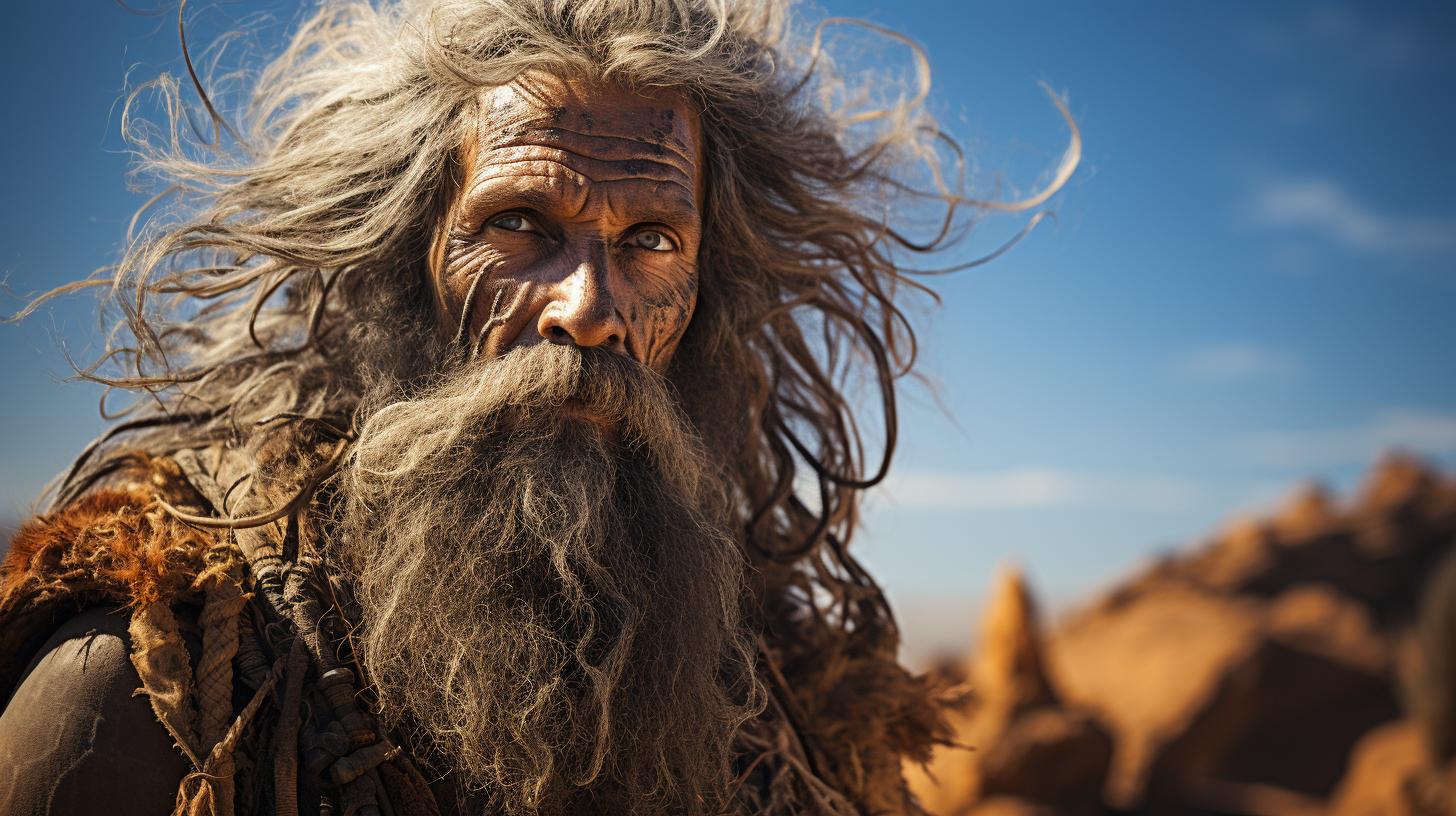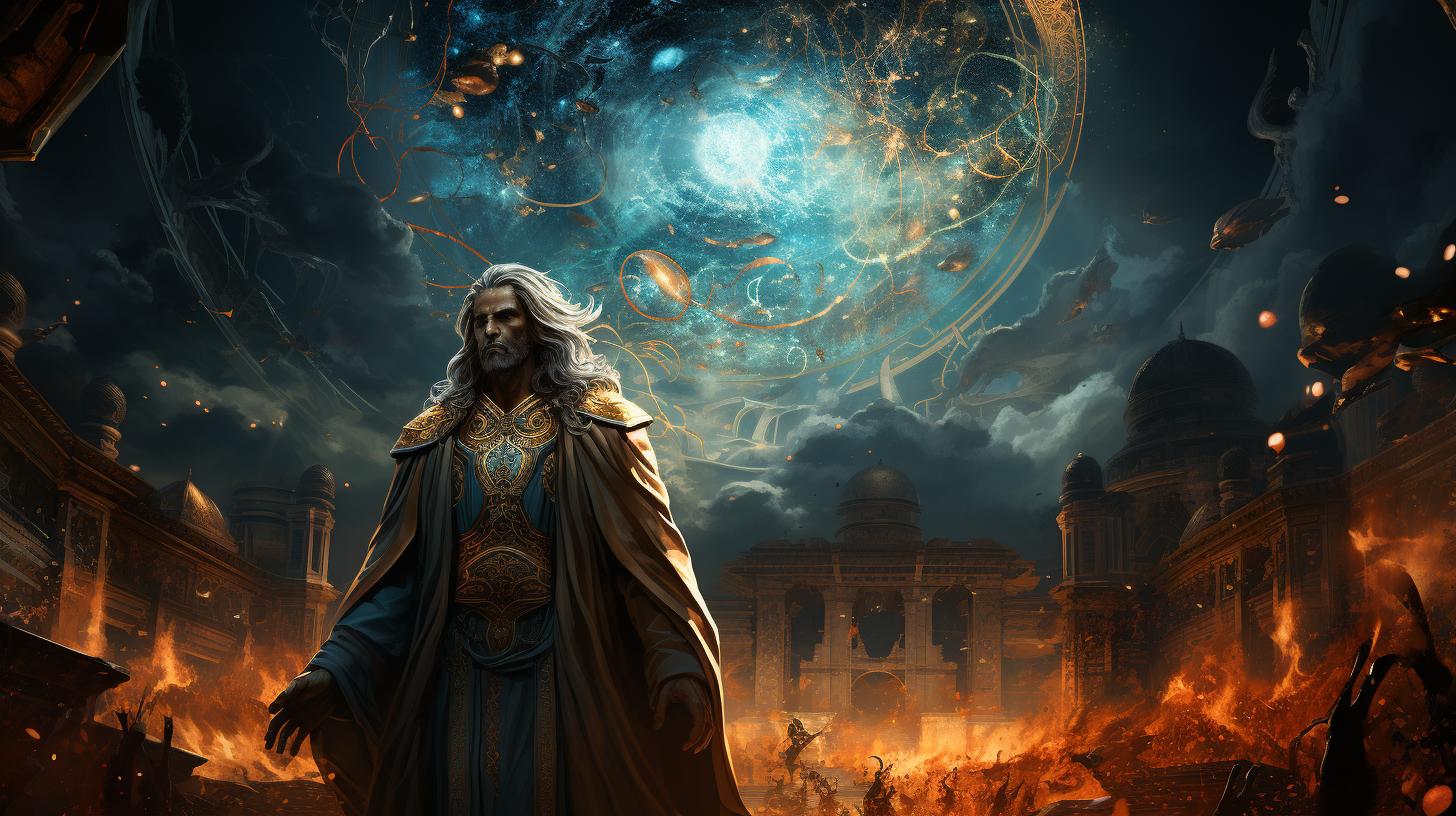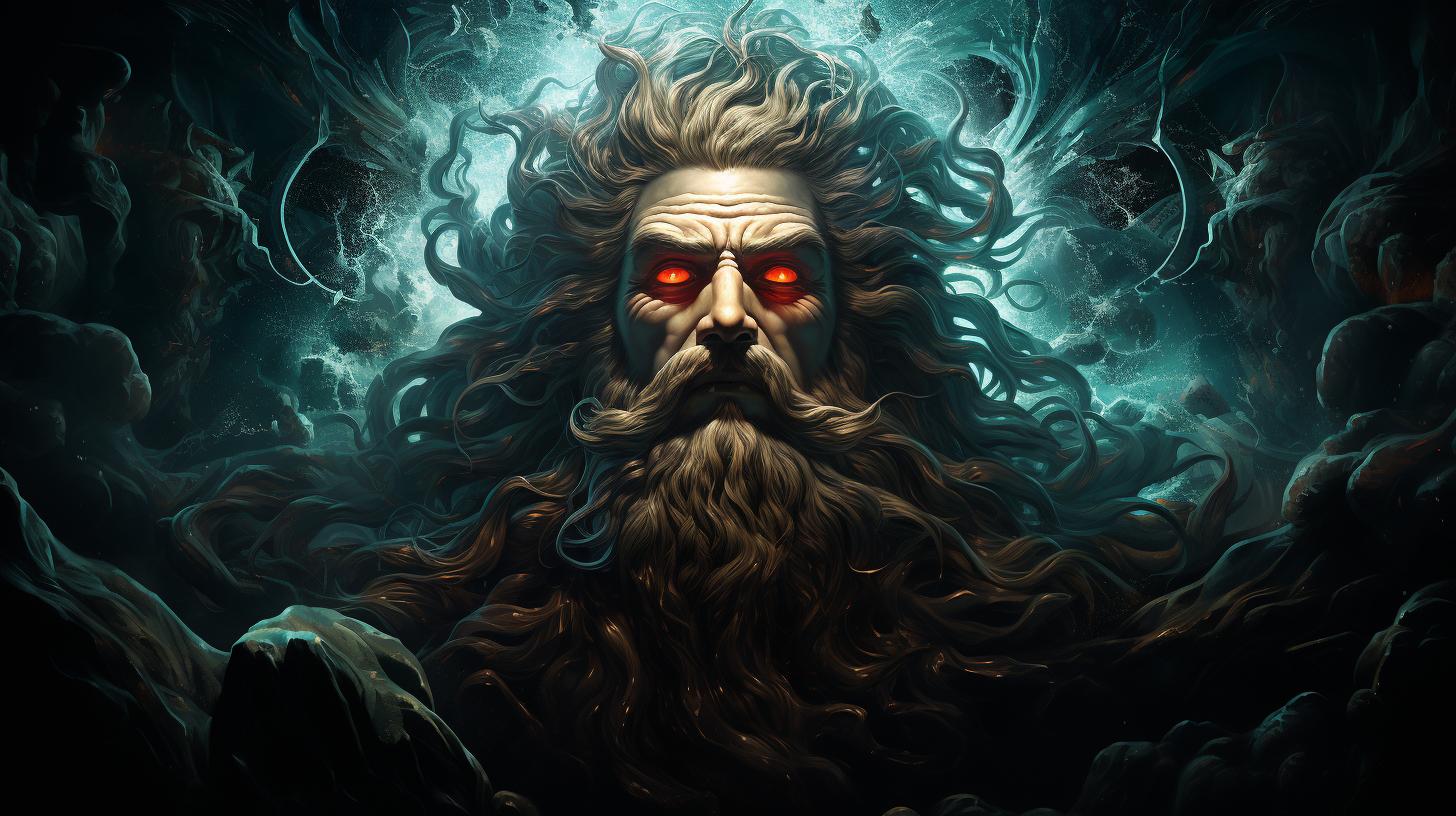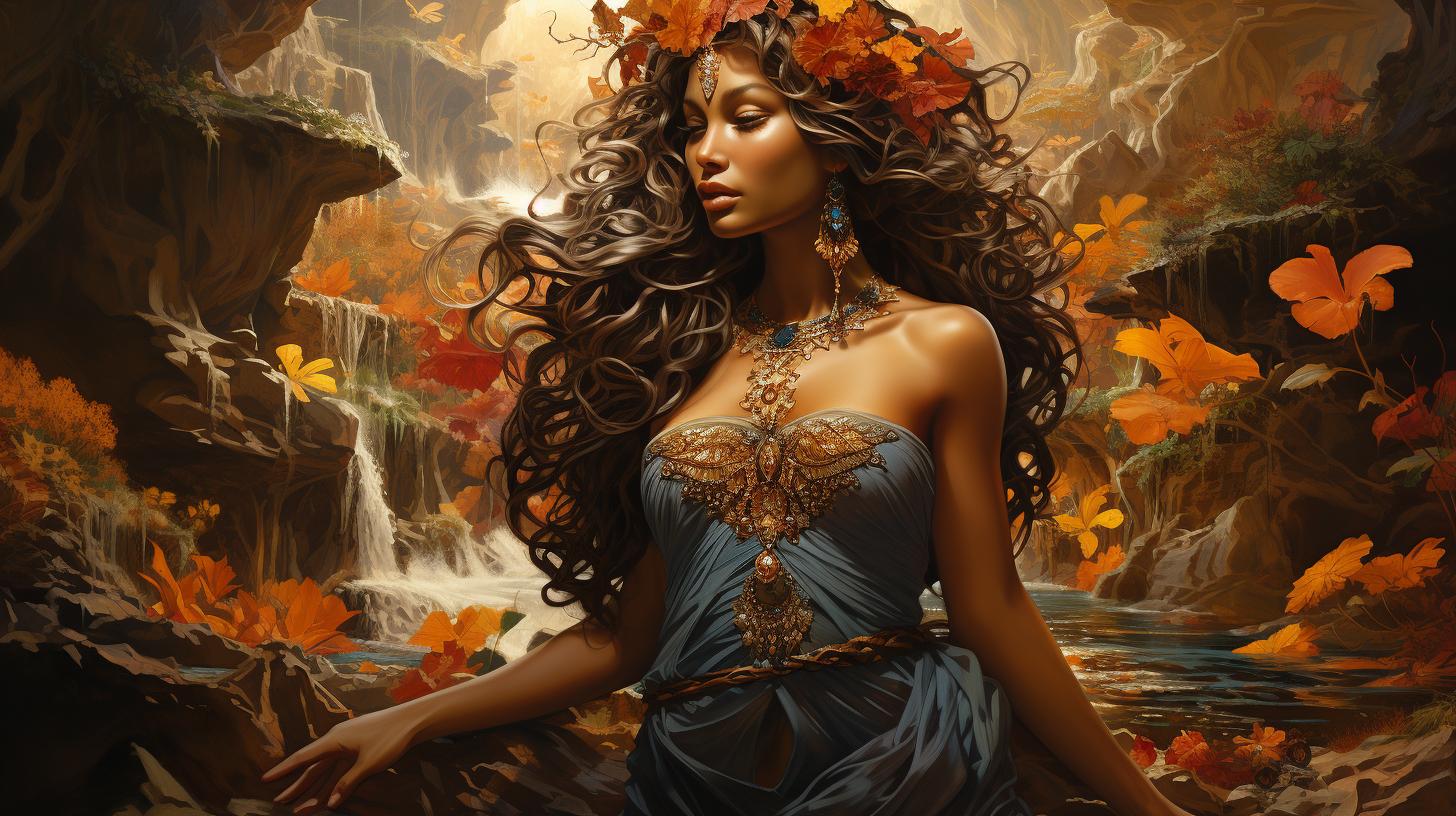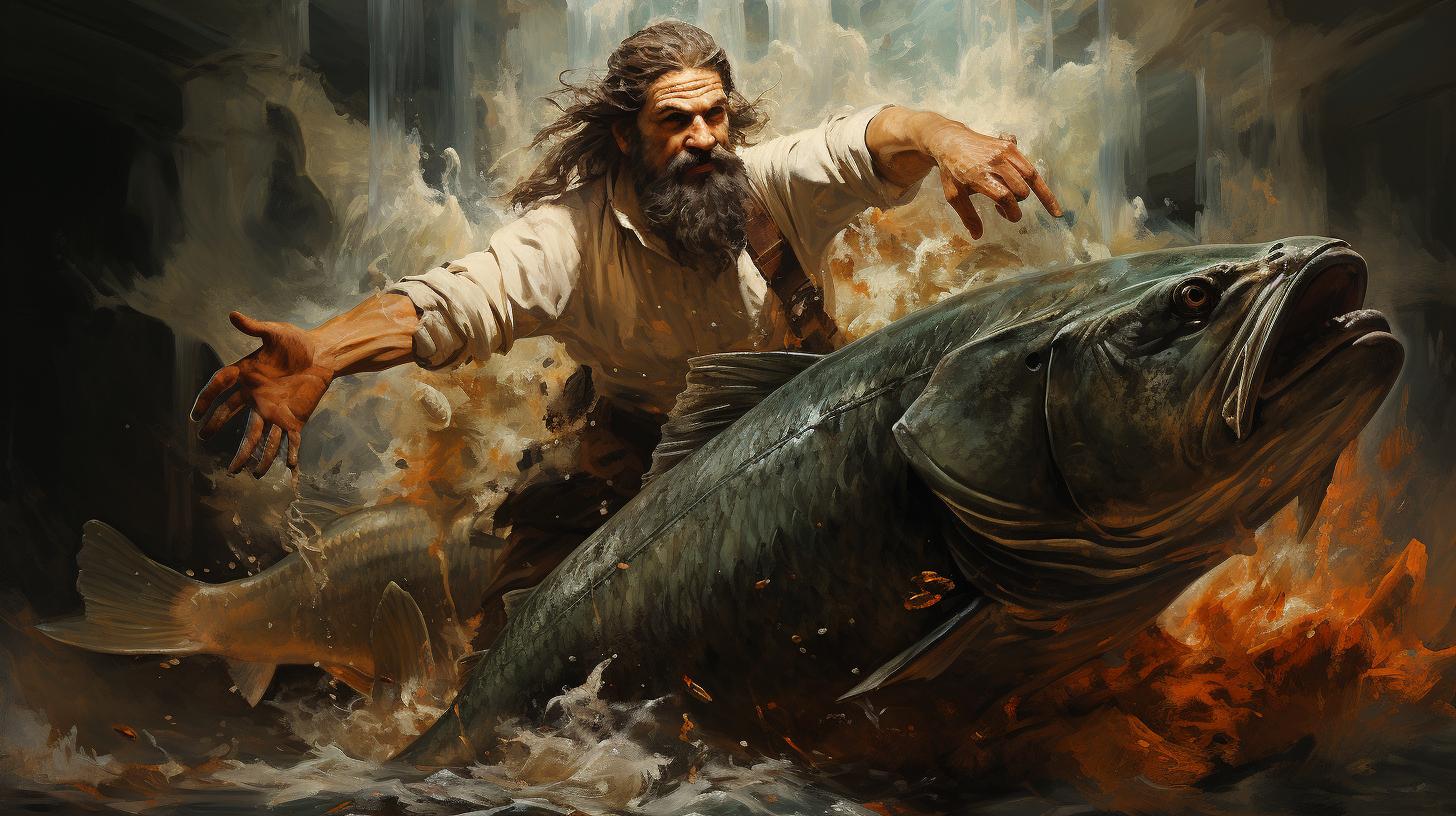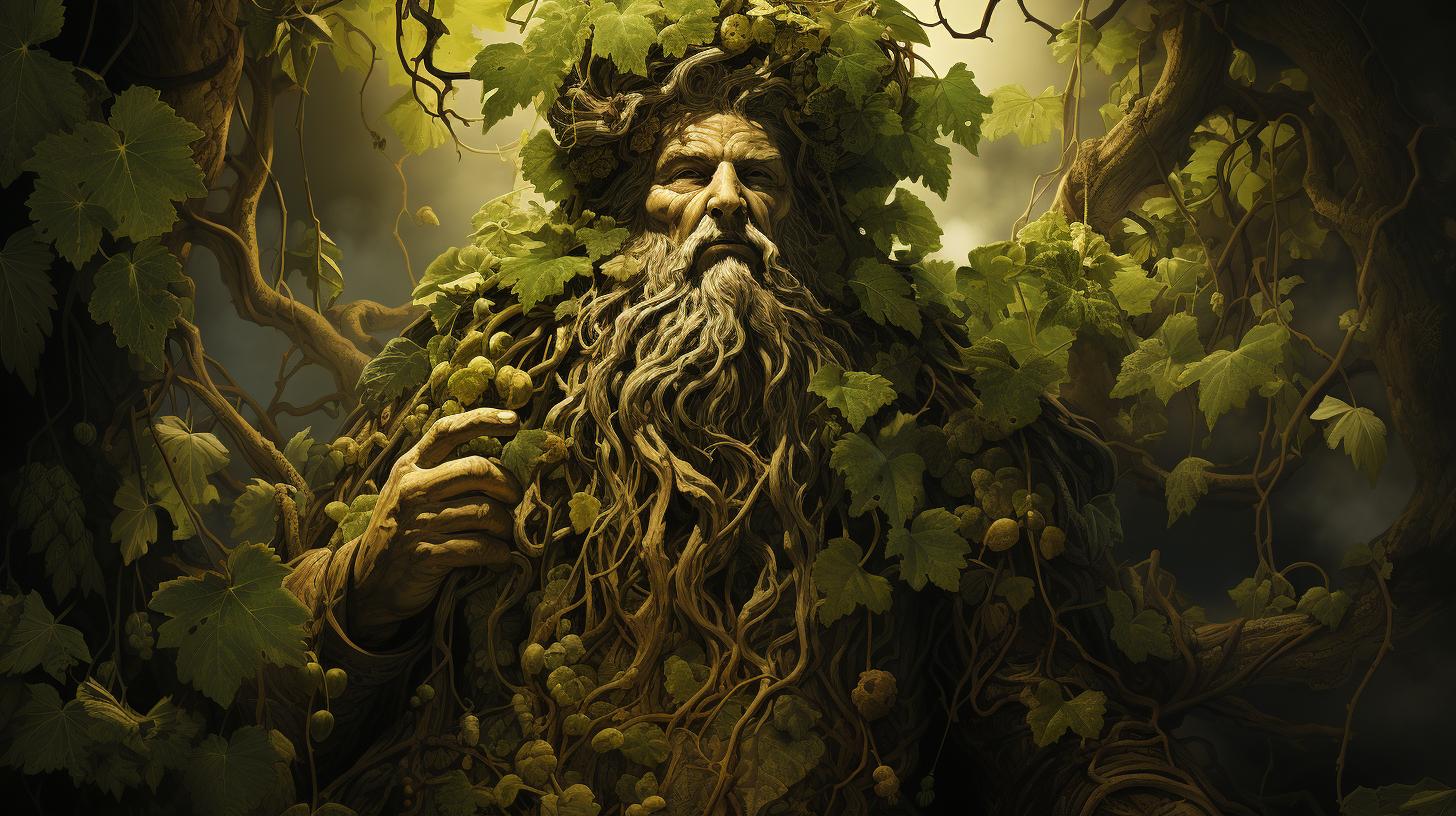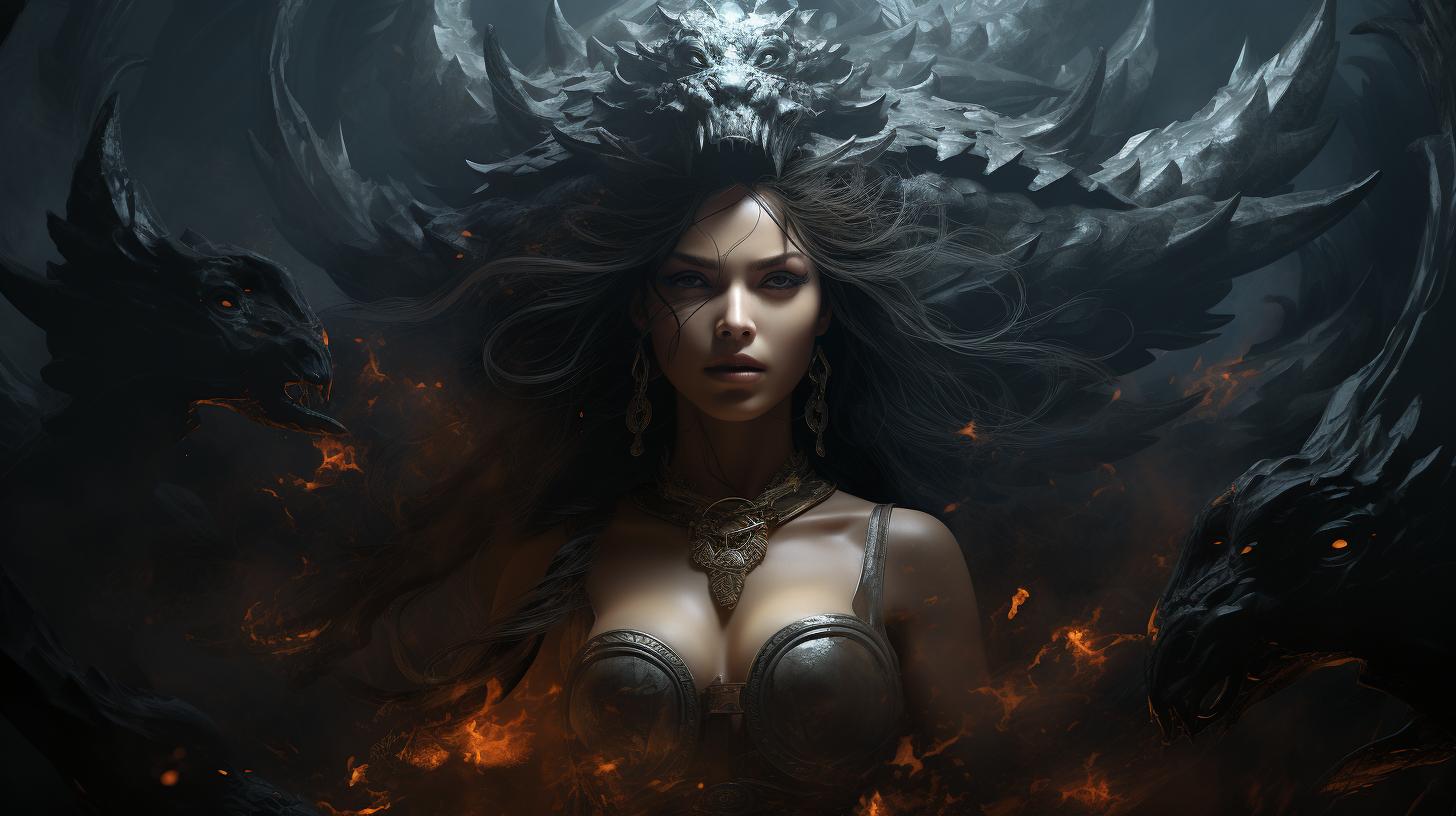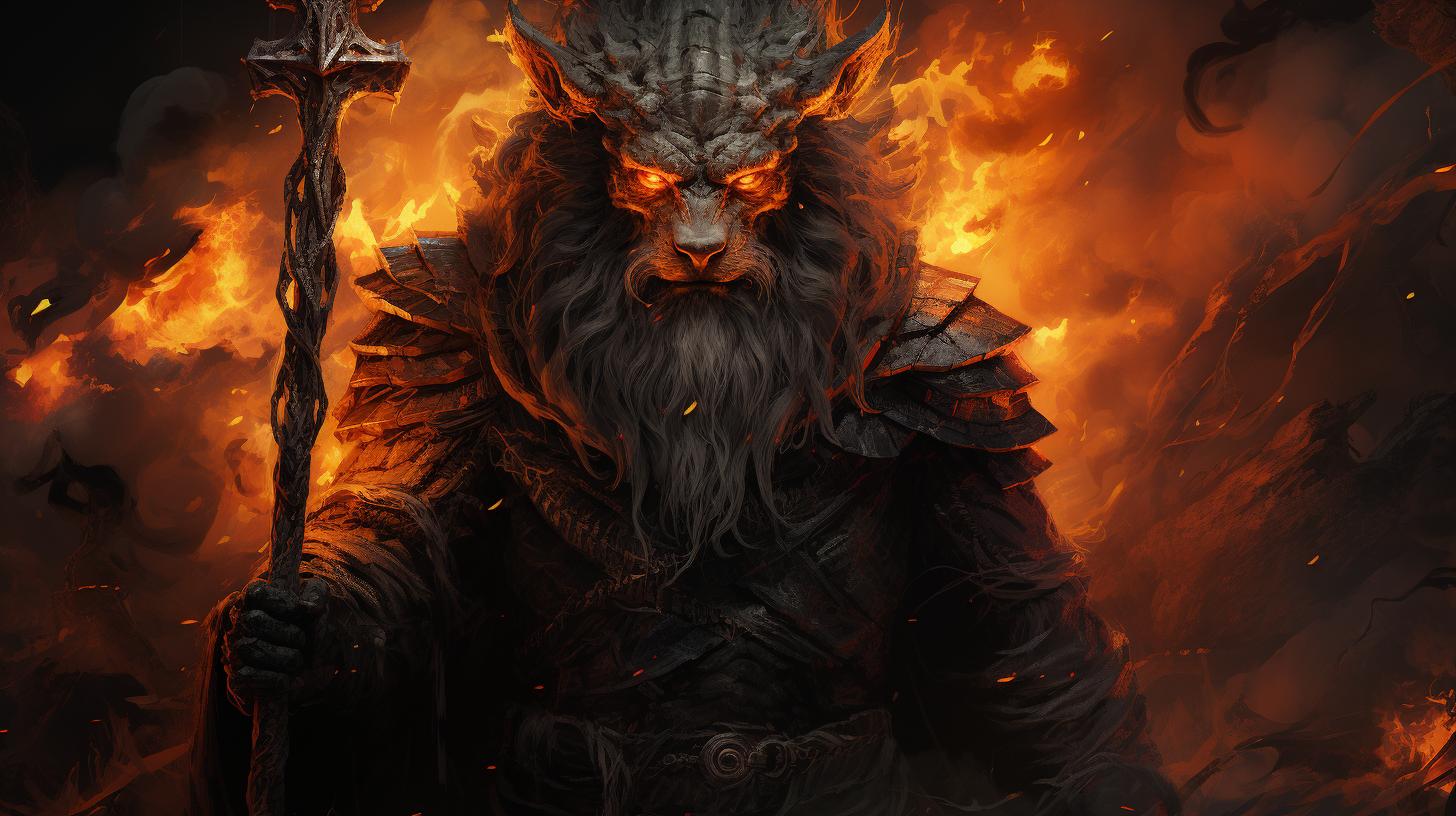The Enigmatic Deity: Nisroch in Ancient Assyrian Belief and Biblical Texts
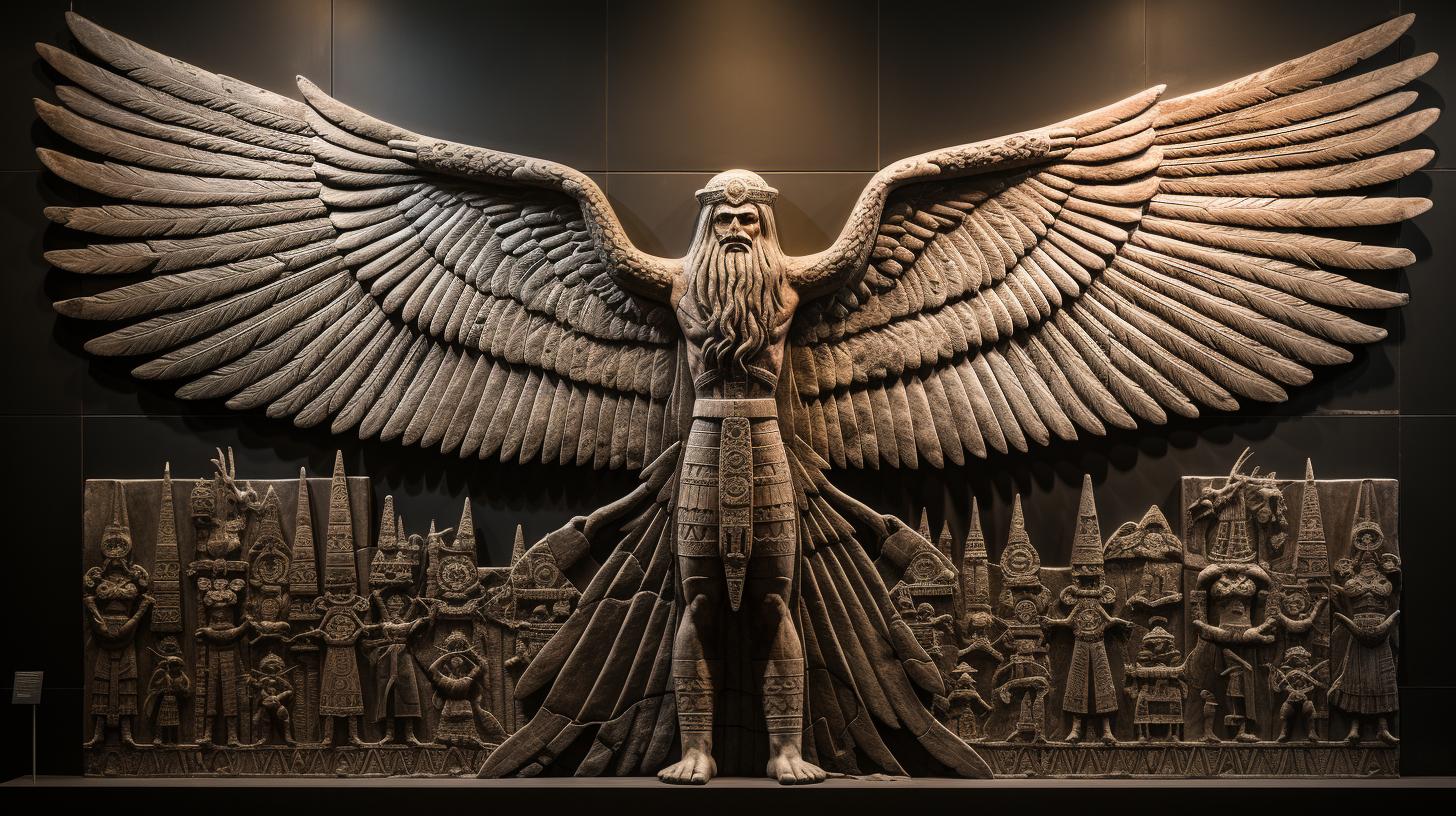
The ancient Assyrian deity Nisroch holds a significant place in Assyrian mythology. This enigmatic God, often depicted as an eagle-headed figure, has attracted attention due to his assimilation of various deities and his vital role in Assyrian beliefs.
As an Assyrian eagle-headed god, Nisroch symbolizes a unique blend of power, protection, and fertility.
Additionally, Nisroch’s presence in the Hebrew Bible, specifically in the narratives involving Sennacherib king of Assyria, has sparked interpretations and theories surrounding his role and meaning. The story of how Sennacherib was worshiping in the temple of Nisroch when he was murdered by his sons Adrammelech and Sharezer, as recounted in the biblical texts, illustrates the complex interplay of divine favor and royal destiny in ancient Near Eastern religions.
In this article, we will explore the origin, significance, worship, and contemporary interpretations of Nisroch, shedding light on this intriguing figure from ancient Assyria and his depiction as an eagle-headed deity in art and scripture.
The Origin and Significance of Nisroch in Assyrian Mythology and Biblical Accounts
In order to comprehend the significance and meaning of Nisroch in Assyrian mythology and its biblical context, it is crucial to explore the historical background of the Assyrian gods, establish an introduction to Nisroch as an Assyrian bird god, and delve into his role and attributes in Assyrian beliefs and biblical narratives.
Historical Background of Assyrian Gods
In the rich tapestry of ancient Mesopotamian civilization, the Assyrians cultivated a complex pantheon of deities. This pantheon represented various aspects of life, nature, and the cosmos, with gods such as Ashur, Ishtar, and Marduk holding esteemed positions.
The history of these deities provides valuable context for comprehending the role of Nisroch, an Assyrian eagle-headed god, within their belief system.
Introduction to Nisroch: Assimilation of Deities and Symbolism
Nisroch emerges as a fascinating deity within Assyrian mythology due to his intriguing assimilation of other deities and the symbolism of his eagle-headed form. Nisroch’s origins can be traced back to the multifaceted nature of ancient Mesopotamian religious beliefs, where gods often assimilated attributes and roles from other deities, thus enriching the pantheon and their respective mythologies.
By exploring Nisroch’s assimilation and his representation as an Assyrian bird god, we gain insight into the dynamic interplay of divine roles and how they shaped the Assyrian pantheon and influenced their society.
Role and Attributes of Nisroch in Assyrian Beliefs and Biblical Texts
Within the framework of Assyrian beliefs and biblical narratives, Nisroch occupied a distinct position with his unique set of attributes and responsibilities. Although records on Nisroch are scarce, his depictions in ancient art and his portrayal in textual references point to his role as a deity associated with agriculture, fertility, and protection.
Additionally, the mention of Nisroch in the Bible, where he is described as the god Sennacherib was worshiping when assassinated by his sons Adrammelech and Sharezer, highlights the deity’s significance in the nexus of divine and royal affairs.
By examining Nisroch’s role and attributes, along with his mention in the biblical texts, we can gain a deeper understanding of his significance within the broader Assyrian belief system, the impact he had on the lives of the ancient Assyrians, and his enduring legacy in biblical history.
Nisroch in the Hebrew Bible
Nisroch’s Mention in Isaiah and 2 Kings
- The book of Isaiah references Nisroch in relation to the downfall of the Assyrian king Sennacherib. It recounts how Sennacherib, while worshiping in the temple of his god Nisroch, was assassinated by his sons Adrammelech and Sharezer, underscoring the tumultuous nature of Assyrian royal succession and divine retribution.
- In 2 Kings, Nisroch is mentioned as one of the gods of the Assyrians.
It highlights his association with the royal court and the Assyrian king’s reliance on this idol for protection and divine favor, further illustrating the integral role of Nisroch in the spiritual and political life of Assyria.
Interpretations and Theories Surrounding Nisroch’s Role and Meaning
The mention of Nisroch in the Hebrew Bible has led to various interpretations and theories regarding his role and the meaning of his name.
From the Hebrew word for this god, scholars have deduced that Nisroch represents a specific aspect of Assyrian divine power, connected to protection, agriculture, and kingship. Others suggest that Nisroch’s association with Sennacherib’s assassination reflects a divine judgment against the king’s arrogance, highlighting the complex relationship between the divine and the mortal realms in ancient Near Eastern thought.
Comparisons with Other Deities in the Hebrew Bible
Nisroch’s mention in the Hebrew Bible allows for comparisons with other deities mentioned in the same context. For example, the contrast between Nisroch and Yahweh, the God of Israel, highlights the clash of religious beliefs and the political dynamics in ancient Mesopotamia, hinting at the underlying fight between the angels and demons, a theme echoed in various mythologies.
Nisroch’s mention in the Hebrew Bible provides a glimpse into the complex interplay between Assyrian mythology and the religious landscape of the ancient Near East. Further exploration of these references offers valuable insights into the cultural, religious, and political aspects of the time, including the belief that demons can feel pain, which adds a layer of complexity to our understanding of these entities.
Iconography and Symbolism of Nisroch
Iconography and symbolism played a crucial role in depicting the Assyrian god Nisroch, further enhancing the understanding of his significance in ancient Mesopotamian art and culture. His depictions often feature him wearing beaten armor, symbolizing his readiness for the eternal conflict between the divine forces.
Depictions of Nisroch: The Eagle-Headed Deity
Nisroch is commonly portrayed as an eagle-headed deity in Assyrian art, with wings and exaggerated features that emphasize his divine nature.
This unique representation merges human and avian characteristics, symbolizing the god’s association with the sky and divine power. The eagle, with its majestic presence, conveys Nisroch’s dominion over the heavens and his role as a messenger between the mortal and divine realms, illustrating the perpetual struggle between the angels and demons.
Nisroch’s Connection to Ninurta and Other Assyrian Gods
Nisroch’s association with Ninurta, the god of war and agriculture, highlights the shared attributes and interconnections among Assyrian deities. In some depictions, Nisroch is shown carrying Ninurta’s symbols, such as the bow and arrow, emphasizing their close relationship.
This connection suggests Nisroch’s involvement in war, hunting, and fertility, bridging multiple aspects of Assyrian life and hinting at the larger cosmic battle between the forces of good and evil, a theme that resonates with the fight between the angels and demons.
Symbolic Significance of Nisroch in Ancient Mesopotamian Art
As a god associated with various domains, Nisroch symbolizes the harmonious balance between human endeavors and the divine will.
His presence in artwork serves as a reminder of the gods’ influence on human affairs and the importance of their worship in Assyrian society, subtly referencing the ongoing narrative that angels and demons can feel pain, which influences their interactions with humanity.
- Nisroch’s depiction as an eagle-headed deity conveys his dominion over the heavens and divine power.
- Nisroch’s connection to Ninurta highlights their close relationship and shared attributes.
- Nisroch’s portrayal in ancient Mesopotamian art symbolizes the divine-human connection and the influence of gods on human affairs.
Worship and Rituals Associated with Nisroch
Nisroch’s Temple and Cult Following
The worship of Nisroch was centered around his temple, which served as a sacred space for devoted followers.
Located in the heart of ancient Assyrian cities, these temples were adorned with ornate carvings and intricate architecture, reflecting the grandeur associated with Nisroch’s cult. Worshipers would gather in these temples for religious ceremonies, seeking the deity’s blessings and protection, and perhaps pondering the mysteries of whether beings as powerful as Nisroch derived from the same divine essence as the angels and demons, and if they too could feel pain.
The cult of Nisroch thrived in ancient Assyrian society, attracting a loyal following of believers who dedicated themselves to the god’s worship. Nisroch’s temple was managed by a group of priests who performed rituals and maintained the sanctity of the sacred space.
These priests played a vital role in conducting ceremonies and interpreting the will of Nisroch for the worshipers, potentially mediating the complex relationship between the divine and the mundane, much like the intermediaries between the angels and demons.
Practices and Offerings in Nisroch’s Worship
Ritualistic practices formed an integral part of Nisroch’s worship. Devotees would engage in prayers, hymns, and chants to honor the deity and seek his favor. These religious rituals often involved the burning of aromatic incense to create a spiritual atmosphere and symbolize the ascent of prayers to the divine realm.
Offerings played a significant role in Nisroch’s worship, with worshipers bringing forth gifts to demonstrate their devotion. These offerings varied from sacred food items, such as grains and livestock, to valuable objects and riches.
The act of making offerings was seen as a form of reciprocity, where the devotees showed their gratitude to Nisroch for his blessings and protection, embodying the belief that even divine beings, much like the angels and demons of lore, appreciate the gestures of faith and devotion from their followers.
Influence of Nisroch’s Worship on Ancient Near Eastern Culture
The worship of Nisroch extended beyond the religious sphere and had a profound influence on the broader ancient Near Eastern culture.
Nisroch’s prominence in Assyrian mythology and his association with divine kingship shaped the political and social structures of the Assyrian Empire.
Various inscriptions and artifacts depict Nisroch’s influence on religious and administrative practices, showcasing his role as a patron deity of the ruling elite.
The divine authority attributed to Nisroch bolstered the legitimacy of kings and their rule, establishing a close connection between religion and state power.
Furthermore, the spread of Nisroch’s worship through the Assyrian Empire facilitated cultural exchange and interaction with neighboring regions.
It was this idol that Sennacherib worshiped, and that Sennacherib’s devotion to Nisroch deepened his connection to Assyria from his campaigns.
The assimilation of local deities and customs into Nisroch’s cult not only reinforced the empire’s control but also contributed to the syncretism of religious beliefs in the ancient Near East, particularly through the inclusion of eagle-headed deity figures, which underscored the eagle-headed god’s importance.
Contemporary Perspectives and Interpretations of Nisroch
Our modern world continues to be captivated by the mysterious deity Nisroch from ancient Assyrian mythology, often pondering what does Nisroch mean and the complexities of his identity as an eagle-headed Assyrian god.
This section explores the different contemporary perspectives and interpretations surrounding Nisroch, shedding light on his enduring relevance in various aspects of culture and media.
Nisroch’s Legacy: Relevance in Modern Assyrian Culture
Nisroch holds a special place in the hearts of Assyrian communities around the world.
His rich legacy is deeply intertwined with Assyrian culture, serving as a symbol of pride and heritage. Today, during cultural events and celebrations, Nisroch is honored and remembered, reminding Assyrians of their ancient roots and the meaning of Nisroch in their historical narrative.
Nisroch’s Representation in Popular Media and Literature
Nisroch has found his way into popular media, captivating audiences through literature, movies, and even video games. Writers and filmmakers draw inspiration from the Assyrian pantheon, bringing Nisroch to life in thrilling tales and epic adventures.
His presence adds depth and intrigue to these creative works, captivating the imagination of audiences worldwide.
Debunking Misconceptions and Misinterpretations of Nisroch
- Misconception 1: Nisroch is a malevolent deity associated with dark practices.
- Misconception 2: Nisroch is solely a figure of evil in the Hebrew Bible.
- Misinterpretation 1: Nisroch’s role is limited to being a mere messenger god.
- Misinterpretation 2: Nisroch’s eagle-headed portrayal indicates a connection to other bird-related deities.
It is vital to address these misconceptions and misinterpretations surrounding Nisroch.
Scholars and experts emphasize the need for accurate understanding and contextual interpretation of ancient texts and artifacts. By dispelling these inaccuracies, we can form a more comprehensive understanding of Nisroch’s true significance and his multifaceted role in ancient Assyrian mythology.
In conclusion, Nisroch, the enigmatic Assyrian god, continues to captivate our modern world. From his legacy in Assyrian culture to his representation in popular media, Nisroch remains a subject of fascination and interpretation.
By debunking misconceptions and misinterpretations, we strive to unravel the true essence of this ancient deity, honoring his place in history and culture.
.

